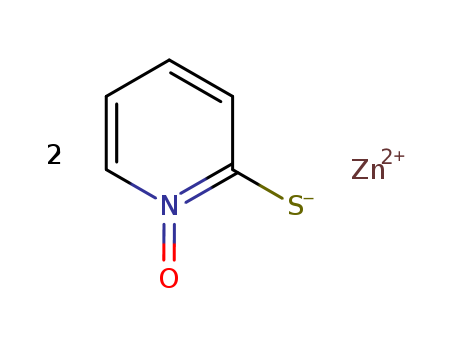- Chemical Name:Zinc pyrithione
- CAS No.:13463-41-7
- Molecular Formula:2(C5H4NOS).Zn
- Molecular Weight:317.708
- Hs Code.:2933.39
- UN Number:2811
- Wikipedia:Zinc_pyrithione
- RXCUI:39952
- Mol file:13463-41-7.mol
Synonyms:(T-4)-bis(1-hydroxy-2(1H)- pyridinethionato-O,S)zinc;bis(1-hydroxy-2(1H)-pyridinethionato)zinc;bis(N-oxopyridine-2-thionato)zinc (II);Dan-Gard;de-squaman;pyrithione zinc;Sebulon;zinc pyridinethione;zinc pyrithione;zinc, bis(1-hydroxy-2(1H)-pyridinethionato-O,S)-(T-4)-;zinc-2-pyridinethione-1-oxide;Zincon (zinc pyrithione);zincpolyanemine;ZNP;ZPT



 T+
T+


